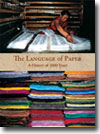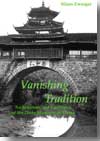| Our Publications | ||
| Books by Title | ||
| Books by Author | ||
| Books by Country | ||
| E-books | ||
| About | ||
| Orchid Press E-books | ||
| Distributed E-books | ||
| Our Bookshop | ||
| About Us | ||
| Browse Shop | ||
| How to Buy | ||
| Contact Us | ||
| WE BUY BOOKS AND LIBRARIES | ||
|
||
Orchid Books
Orchid Books is a collection of well illustrated books, appealing to both the layman and the scholar, and written by specialists.| Central & North-East Asia | Burma | South Asia |
| Thailand & South-East Asia | Himalaya & Tibet | China |
China
 |
Chinese Shadow Theatre Libretti by Sven Broman 1994. xii, 96 pp., 10 col. pl., 25 pp. of Chinese text (102 MSS pages reproduced) 21 x 18.5 cm. Softbound. ISBN-10: 974-8299-37-6 $23.00 ISBN-13: 978-974-8299-37-2 Ten Chinese shadow theatre libretti are here translated into English, with notes and commentaries. These translations of well known and popular plays are lively and refreshing. There are four Buddhist plays from Pai She, ‘The White Snake’, one Taoist play, Tai Ch’ang sung tzu, ‘The Immortal of Heaven brings a Son’, two historical plays (‘The Lesser Insult at the City Gate’, and ‘The Execution of Tou O’); and the three popular plays ‘Beating the Sack’, ‘The Pavilion’, and ‘The Rice Tribute’. |
 |
In Pursuit of Heavenly Harmony Paintings and Calligraphy by Bada Shanren; Joseph Chang, Bai Qianshen & Stephen D. Allee 222 pp., 113 colour and 16 b&w plates, illustrations of 36 seals and 12 signatures of the artist, chronology, glossary, bibliography of Asian and Western sources, index, 23.5 x 29 cm., hardbound. ISBN-10: 974-524-030-3 $60.00 ISBN-13: 978-974-524-030-8 Bada Shanren, the enigmatic, eccentric monk-painter also known as Zu Da, created a wealth of beautiful and important paintings and calligraphy over the course of his life (1626-1705?). A princely descendent of the Ming dynasty (1368-1644) imperial house, Bada Shanren developed a distinctive, evolving individual style of painting that had a profound and lasting influence on other calligraphers. Two prominent collector-scholars, Wang Fangyu and Sum Wai, were devoted to the collection and study of Bada Shanren’s oeuvre. Their gift to the Freer Gallery of Art of twenty superb works by Bada Shanren and an extensive research collection of around 1,900 items, together with a further purchase of thirteen works from their collection, have made the Freer the unrivaled center for the exhibition and study of Bada’s art. In the spring of 2003, an exhibition of these works will be on display in the Freer Gallery of Art; this book accompanies the exhibition and will have a life well beyond it, as it documents an important part of the museum’s permanent collection. Text in English, with glossary and detailed descriptions of exhibits in bilingual English/Chinese. [Read an Interview] |
 |
The Language of Paper by Therese Weber 2008. 224 pp., 178 colour and 26 b & w plates, 1 map, bibliography, index, 29 x 21 cm. Hardcover ISBN-10: 974-524-093-1 $50.00 ISBN-13: 978-974-524-093-3 Paper technology originated in China some two millennia ago, from where it spread east, to Korea and Japan, and west, along the Silk Road, to Central Asia, eventually reaching Europe in the 13th century. As the technology propagated, paper effected profound changes in each society it touched, becoming one of the most important of all cultural media, a status that it retains to the present. Paper accrues value as religious and symbolic markings are added to its surface; fortune papers transport messages to the gods, paper is given the value of money in the form of banknotes, and the dream of flying was first realised in hot-air balloons made of paper. Paper can even be employed as architectural elements, as textiles for garments, and as a medium for artistic expression. In one or many of these manifestations, paper effects the lives of all on earth today. In this cultural history of paper, acclaimed paper artist Therese Weber travels to the few remaining places where traditional methods of papermaking have been preserved. Commencing there Weber takes the reader on a fascinating and colourful journey of discovery of a commodity that many may take for granted, but few fully understand. |
 |
Scholars’ Rocks in Ancient China The Suyuan Stone Catalogue by Kemin Hu 2002 176 pp., 160 color photos, 30 woodblock prints. Notes, bibliography, Chinese word list, index. 28 x 22 cm. Hardbound. ISBN-10: 974-524-016-8 $50.00 ISBN-13: 978-974-524-016-2 Interest in scholars stones (gongshi), collected by Chinese literati and artists since the Tang dynasty, has expanded greatly in the West over the last five years, with over a dozen major exhibits mounted in museums around the world. Yet there exists only a handful of titles in English on the subject, and important texts such as the Suyuan Stone Catalogue, one of China’s earliest and most comprehensive illustrated books on the subject, have never been translated. With its illuminating commentary and well-rendered wood-block illustrations, the Suyuan catalogue is an invaluable reference book for the study of ancient Chinese scholars’ rocks. From the 101 entries of various stones and stone types listed in the catalogue, the author has chosen to focus on twenty of the historically most important, then provided translated text, original illustrations, and commentary for each. These stones are used as a springboard for an extended discussion of the connoisseurship and collection of scholars’ stones, thoroughly illustrated with photos, paintings, and related materials, and especially, photographs of the finest stones from modern collections. Kemin Hu was stirred to an appreciation of scholars’ stones by her father, a noted connoisseur of Chinese antiquities. She became an authority on scholars’ stones through her long career as a dealer and collector of them, as well as through her friendships with such great collectors as Richard Rosenblum and C.C. Wang. Kemin Hu is also the author of Spirit of Gongshi:Chinese Scholars’ Rocks. |
 |
Summit of Treasures Buddhist Cave Art of Dazu, China by Angela Falco Howard 2001. 244 pp., numerous colour illustrations, chronology, bibliography, glossary and index. 29 x 22 cm., hardbound. ISBN-10: 974-524-007-9 $50.00 ISBN-13: 978-974-524-007-0 The monumental cave complexes of the Baodingshan site at Dazu, in Sichuan Province, and their vast treasure trove of Buddhist sculpture and painting have been little studied relative to other Buddhist cave art in China. This is the first English-language pub-lication to reveal and explain the incredible artworks hidden in this remote site, dating from the Song dynasty and inspired by the profound tenets of Esoteric Buddhism. Using brilliant color photographs and detailed line drawings, Professor Angel Falco Howard presents the caves in the didactic order intended by their creators, explaining all iconography and symbolism, and the hidden meanings in both the individual elements and over-all design. Finally, the author places this magnificent construction within the context of an indigenous style of Buddhist sculpture that flourished in Sichuan province between the 11th and 13th centuries. Angela Falco Howard is a professor in the Department of Art History at Rutgers University and a Research Fellow in the Department of Asian Art of the Metroplitan Museum of Art. Author of The Imagery of the Cosmological Buddha, Professor Howard is an eminent authority on Buddhist sculpture and painting and has researched and published extensively on the cave art of Sichuan Province inspired by Esotric Buddhism. |
 |
Vanishing Tradition: Architecture and Carpentry of the Dong Minority in China by Klaus Zwerger 2006. 224 pp., 239 duotone plates, 12 architectural plans and line drawings, map, 290 x 210, hardcover ISBN-10: 974-524-061-3 $50.00 ISBN-13: 978-974-524-061-2 An exploration of the unique wooden architectural tradition of the Dong minority peoples of the rugged mountainous regions of south-western China—a tradition most likely to disappear in decades to come, as it is overwhelmed by China’s current rampant modernization. The author discusses the historic development of Dong architectural techniques as effected by Dong social and physical environment as well as agriculture and forestry practices of the Dong people. Both residential and public buildings are described and analyzed and all types of structures are illustrated in many striking black and white images. |
PO Box 70, Trinity TB, NL, A0C 2S0, Canada
Telephone: +1 709-330-4703